gentle yoga sequence pdf
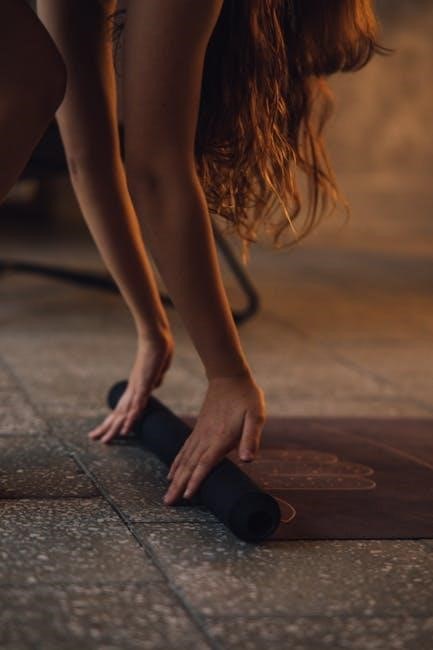
A 60-minute gentle yoga sequence PDF offers a structured, relaxing practice perfect for beginners and experienced practitioners. It focuses on calm movements, deep breathing, and mindfulness to reduce stress and improve overall well-being.
Overview of Gentle Yoga
Gentle yoga is a slow-paced, therapeutic practice emphasizing relaxation, flexibility, and deep breathing. It incorporates modified postures, breathing techniques, and meditation, making it accessible for all levels, including those with limited mobility or seeking stress relief. This calming approach focuses on aligning the body and mind, promoting balance and inner peace. Ideal for beginners or individuals looking to unwind, gentle yoga fosters a nurturing environment for holistic well-being. The practice involves slow, deliberate movements, allowing participants to honor their bodies’ limitations while gaining strength and flexibility. By combining foundational postures, deep breathing, and mindfulness, gentle yoga creates a soothing experience that rejuvenates both the body and mind, making it an excellent choice for those seeking a balanced and restorative practice.
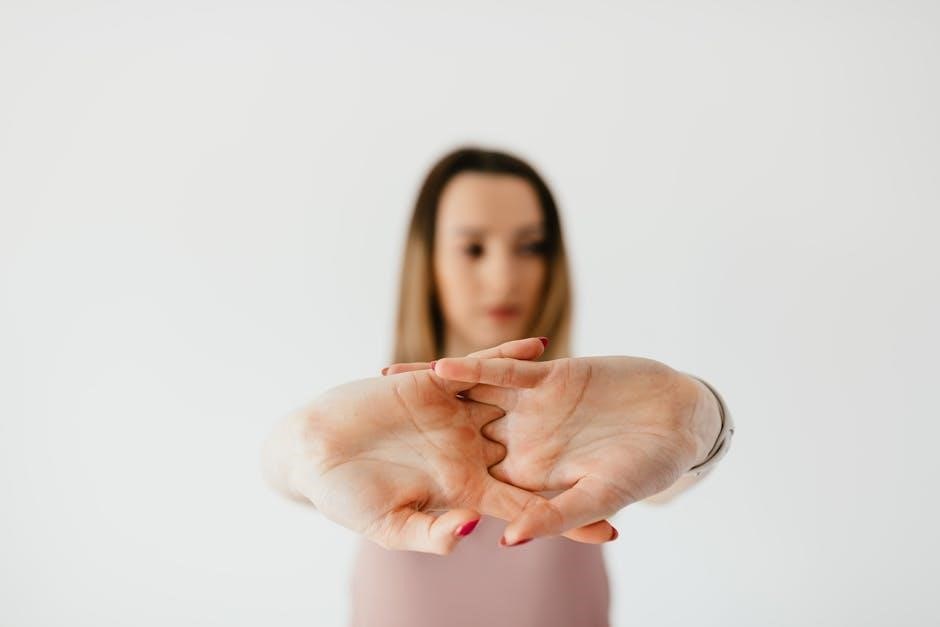
Importance of a Structured Sequence
A structured gentle yoga sequence is essential for ensuring a safe, effective, and enjoyable practice. It provides a clear flow, guiding participants through warm-ups, postures, and relaxation techniques in a logical order. This structure helps prepare the body gradually, preventing injuries and enhancing flexibility. It also creates a meditative atmosphere, allowing practitioners to focus on their breath and movements without distraction. A well-organized sequence ensures that each pose complements the next, fostering a balanced practice that addresses the entire body. For beginners, a structured approach offers clarity and confidence, while experienced practitioners appreciate the depth and progression. Ultimately, a structured sequence promotes mindfulness, physical alignment, and emotional calm, making it a cornerstone of a transformative gentle yoga experience.
Benefits of a Printable PDF Guide
A printable gentle yoga sequence PDF provides numerous benefits, offering convenience and accessibility for practitioners. It allows users to follow a structured practice anywhere, without relying on digital devices, creating a distraction-free experience. The guide is easy to print and carry, making it ideal for home practice, travel, or sharing with others. A PDF format ensures clarity and consistency, with detailed instructions and visuals to guide proper alignment and breathing techniques. It also serves as a lasting resource, enabling repeated use and gradual progression in practice. For beginners, the guide offers a clear starting point, while experienced practitioners can use it to deepen their routine. The printable nature of the PDF allows for personalization, enabling users to annotate and tailor the sequence to their needs, fostering a more intimate and effective yoga journey.
Understanding Gentle Yoga
Gentle yoga is a slow-paced, therapeutic practice emphasizing relaxation, flexibility, and deep breathing. It incorporates modified postures, making it accessible for all levels and promoting holistic well-being.
Definition and Key Characteristics
Gentle yoga is a slow-paced, therapeutic practice emphasizing relaxation, flexibility, and deep breathing. It incorporates modified postures, breathing techniques, and meditation, making it accessible for all levels, including those with limited mobility. Key characteristics include slow, deliberate movements, focus on alignment, and the use of props like blocks and straps for comfort. The practice prioritizes mindfulness and calm, fostering a nurturing environment for holistic well-being. It is ideal for beginners or individuals seeking stress relief, as it promotes balance, inner peace, and emotional release. Gentle yoga is designed to align the body and mind, offering a soothing and restorative experience that enhances overall health and well-being.
Target Audience: Beginners and Experienced Practitioners
Gentle yoga is designed for all levels, making it an ideal practice for both beginners and experienced practitioners. For beginners, it offers a slow-paced introduction to foundational postures, breathing techniques, and mindfulness, providing a safe and accessible entry into yoga. Experienced practitioners can deepen their practice by focusing on alignment, relaxation, and subtle movements, refining their skills and enhancing their mindfulness. The therapeutic nature of gentle yoga makes it particularly suitable for those seeking stress relief, improved flexibility, or a calming experience. Its adaptability ensures that everyone can benefit, regardless of their yoga background or physical abilities, fostering a nurturing environment for holistic well-being and personal growth.
Therapeutic Benefits: Relaxation, Flexibility, and Stress Relief
Gentle yoga is renowned for its therapeutic benefits, offering a holistic approach to relaxation, flexibility, and stress relief. By incorporating slow, deliberate movements and deep breathing techniques, it calms the nervous system, reducing anxiety and promoting a sense of calm. The practice enhances flexibility through gentle stretches, improving range of motion and relieving muscle tension. Regular practice strengthens the nervous system, calms the mind, and gently tones the body, leading to better sleep and increased circulation. It also fosters emotional release through heart-opening poses, aiding in stress relief and overall well-being. This practice is particularly beneficial for those seeking a balanced and rejuvenating experience, making it an ideal choice for anyone looking to unwind and improve their mental and physical health.
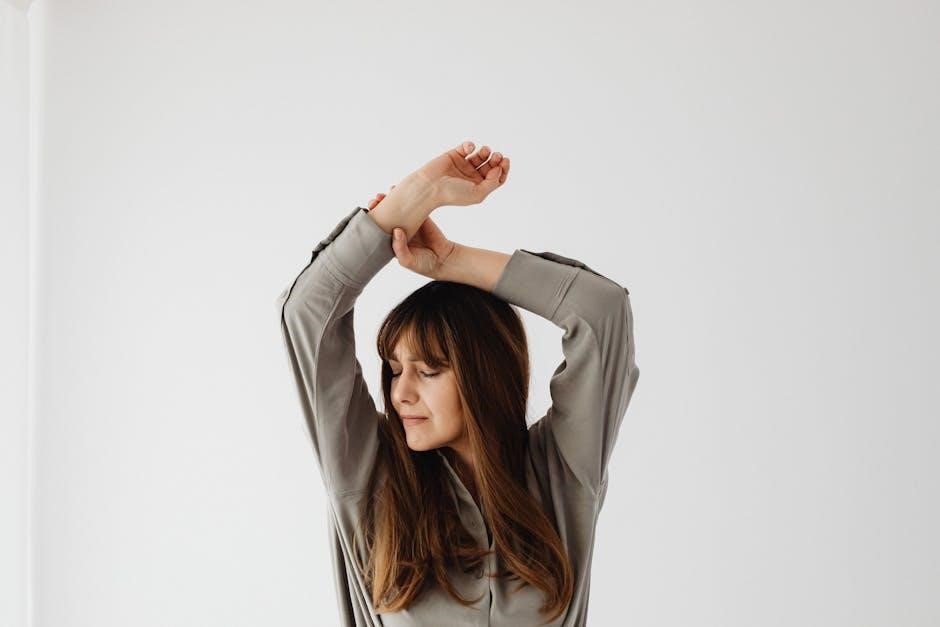
Structure of a 60-Minute Gentle Yoga Sequence
A 60-minute gentle yoga sequence is thoughtfully structured with warm-up, seated postures, standing poses, twists, backbends, inversions, and relaxation, ensuring a balanced and rejuvenating experience.
Warm-Up: Preparing the Body and Mind
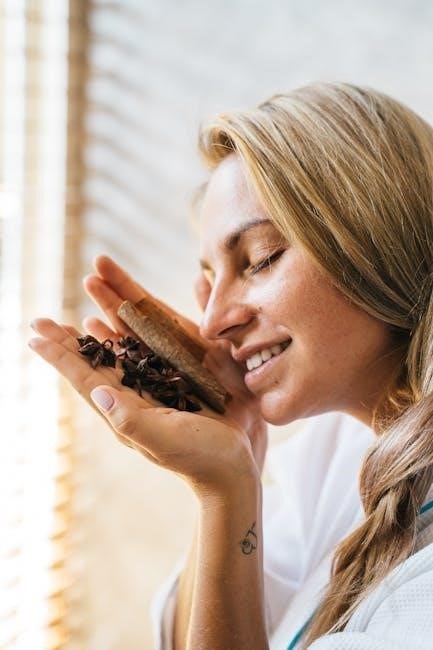
A proper warm-up is essential to transition the body from a resting state to gentle movement, preventing injuries and enhancing flexibility. It gradually increases blood flow and heart rate, preparing muscles for deeper stretches. Gentle yoga sequences often begin with seated or standing exercises that loosen major joints and improve range of motion. This initial phase also calms the mind, setting a meditative tone for the practice. A well-structured warm-up ensures a smooth and safe progression into more complex poses, making the entire session more effective and enjoyable. Deep breathing exercises, neck rolls, and cat-cow stretches are common warm-up techniques to awaken the body and prepare for the sequence ahead.
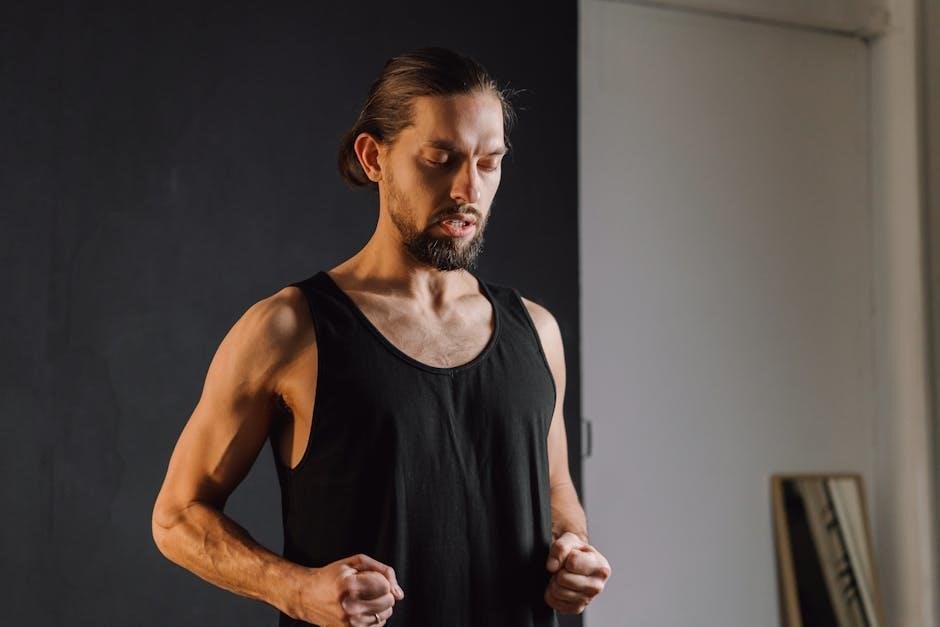
Seated Postures: Foundation for Flexibility and Alignment
Seated postures are foundational in gentle yoga, promoting stability, flexibility, and comfort. They include forward folds, twists, and hip openers, targeting various muscle groups to enhance circulation and relaxation. Basic seated forward folds, such as Seated Hamstring Stretch and Seated Forward Bend, target the hamstrings, calves, and lower back, encouraging deep breathing to release tension. Seated spinal twists, like Bharadvajasana, gently enhance flexibility and promote relaxation in the torso, improving circulation and releasing tension. Seated hip openers, such as Baddha Konasana, release tension in the hips and pelvis, improving flexibility and circulation. Proper alignment and modifications, like using straps or cushions, ensure accessibility for all levels. Holding each pose for 3-5 breaths fosters a calming and grounding experience, preparing the body for deeper stretches and promoting balance and ease in the practice.
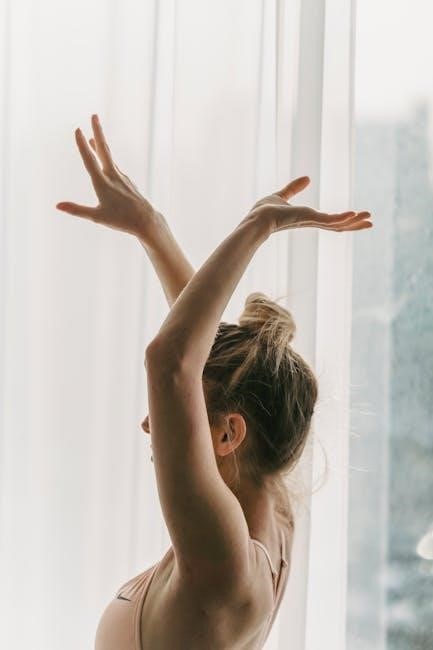
Standing Poses: Building Strength and Balance
Standing poses in a gentle yoga sequence are essential for building strength, balance, and stability. Foundational poses like Mountain Pose and Downward-Facing Dog promote proper alignment and calm energy flow. Balancing postures, such as Tree Pose and Eagle Pose, enhance focus and equilibrium, strengthening the ankles and calves while stretching the hips and knees. These poses are modified to suit all levels, allowing practitioners to use props or walls for support. Held for 3-5 breaths, they foster mindfulness and physical awareness, preparing the body for deeper stretches. Standing poses also transition smoothly into more dynamic movements, ensuring a balanced and rejuvenating practice. They are integral to building confidence and promoting a sense of grounding and stability throughout the sequence.
Gentle Twists and Core Exercises: Enhancing Flexibility and Stability
Gentle twists and core exercises are integral to a balanced yoga practice, enhancing flexibility, stability, and posture. Poses like Seated Spinal Twist and Cat-Cow promote deep breathing, improving spinal mobility and circulation. These movements release tension, reduce stiffness, and foster relaxation. Core-strengthening exercises, such as Boat Pose and modified Plank, gently tone the abdominal muscles, supporting the spine and improving balance. Props like cushions or blocks are often used to ensure comfort and accessibility. Holding each pose for 3-5 breaths allows for a gradual release, enhancing detoxification and calming the nervous system. These exercises also prepare the body for deeper stretches and promote a sense of inner balance. By combining twists and core work, the practice becomes more dynamic, fostering strength, flexibility, and overall well-being in a safe and mindful way.
Backbends and Heart-Opening Poses: Promoting Emotional Release
Backbends and heart-opening poses in a gentle yoga sequence are designed to enhance posture, promote emotional release, and foster a connection to the heart center. Mild backbending poses, such as Cobra Pose and Supported Bridge, gently open the chest and upper back, improving respiratory capacity and emotional well-being. These poses are therapeutic, offering a calming flow while strengthening the back muscles. Heart-opening sequences expand the chest and shoulders, aiding in stress relief and fostering a sense of openness. Modifications, like using blocks or blankets, ensure accessibility for all levels. These poses encourage awareness of alignment and breath, promoting relaxation and inner balance. They are typically introduced midway through the practice to prepare the body for deeper stretches and relaxation, creating a nurturing environment for emotional and physical release.
Relaxation and Cool Down: Deep Breathing and Mindfulness
The final phase of a gentle yoga sequence focuses on relaxation and cool down, emphasizing deep breathing and mindfulness to calm the mind and body. This segment often includes practices like Yoga Nidra, guided meditation, and restorative poses to promote deep relaxation. Deep breathing exercises, such as alternate nostril breathing, help calm the nervous system, while mindfulness techniques encourage present-moment awareness. These practices reduce stress, improve sleep quality, and foster a sense of inner peace. The cool-down phase is essential for allowing the body to integrate the benefits of the practice, leaving participants feeling refreshed and centered. By concluding with mindfulness and relaxation, the sequence ensures a holistic experience, nurturing both physical and mental well-being. This final stage is a powerful way to unwind and recharge, making it a cornerstone of gentle yoga.
Modifications and Props for Accessibility
Using straps, blocks, and blankets ensures comfort and accessibility in gentle yoga. Modifications accommodate different mobility levels, promoting safety and inclusivity for all practitioners.
Using Straps, Blocks, and Blankets for Comfort
Straps, blocks, and blankets are essential props in gentle yoga, enhancing comfort and accessibility. Straps help extend reach in poses like forward folds, while blocks support hands in standing postures. Blankets provide cushioning for joints and spine alignment. These tools allow practitioners to modify poses according to their flexibility and mobility, ensuring a safe and enjoyable practice. By incorporating props, gentle yoga becomes inclusive for all levels, fostering relaxation and reducing strain. Proper use of these aids promotes alignment, prevents injury, and deepens the benefits of each pose, making the practice more effective and accessible for everyone.
Modifying Poses for Different Mobility Levels
Modifying poses in a gentle yoga sequence ensures accessibility for all mobility levels. Beginners or those with limited flexibility can use props or adjust postures to maintain alignment and comfort. For example, seated forward bends can be modified by bending the knees or using a strap to reach the toes. Standing poses like Tree Pose can be practiced with a wall for support or by holding onto a block for balance. Gentle twists can be softened by reducing the depth of the twist or using a cushion for spinal support. These modifications allow practitioners to honor their bodies while still benefiting from the pose; By progressively adjusting postures, individuals can safely deepen their practice over time, ensuring a nurturing and inclusive experience for all. This approach fosters confidence and prevents strain, making gentle yoga adaptable to diverse needs.
Ensuring Safety and Comfort in Each Pose
Ensuring safety and comfort in each pose is essential for a gentle yoga practice. Proper alignment and the use of props, such as blocks or blankets, help maintain comfort and prevent strain. Listening to your body and honoring its limits is crucial; if a pose feels uncomfortable, it’s important to modify or rest. Breathing techniques, such as deep, controlled breaths, help maintain focus and relaxation. Gentle transitions between poses are encouraged to avoid sudden movements that might cause discomfort. Cues for modifications are provided to accommodate different mobility levels, ensuring the practice remains accessible and enjoyable for everyone. By prioritizing safety and comfort, the sequence fosters a nurturing environment for holistic well-being and mindfulness.

Breathing Techniques and Relaxation Methods
Deep breathing exercises, guided meditation, and yoga nidra are integral to gentle yoga, promoting calm, focus, and deep relaxation, enhancing the mind-body connection and overall well-being.
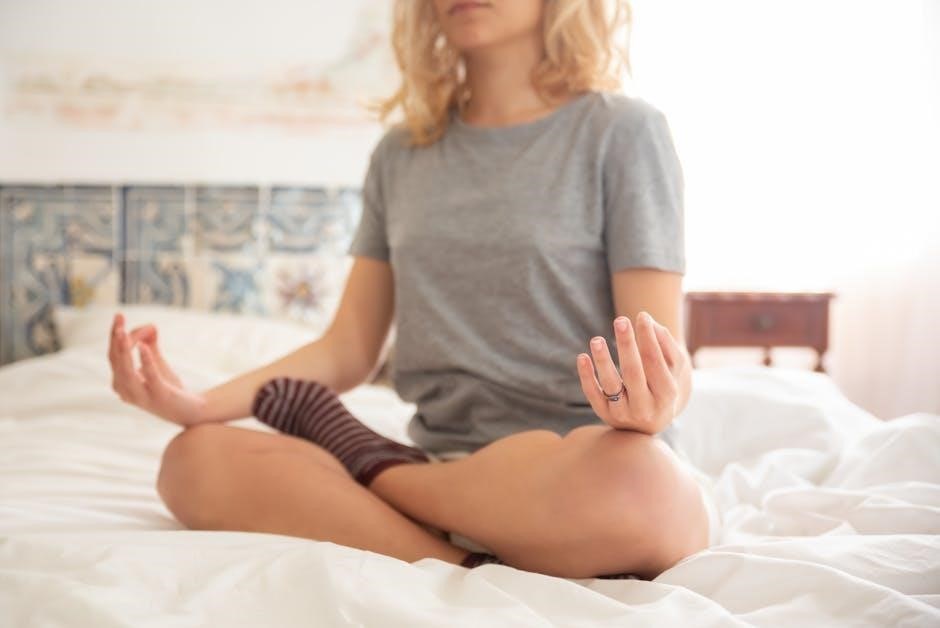
Deep Breathing Exercises for Calm and Focus
Deep breathing exercises are a cornerstone of gentle yoga, fostering calm and focus. Techniques like Ujjayi (ocean breath) and Nadi Shodhana (alternate nostril breathing) promote relaxation and balance. These practices slow down the breath, quieting the mind and reducing stress. Regular deep breathing enhances oxygen flow, improving mental clarity and emotional stability. In a gentle yoga sequence, these exercises are often introduced during the warm-up or relaxation phases, setting a meditative tone. They are simple yet powerful tools for cultivating inner peace and preparing the body for deeper stretches and poses. By focusing on the breath, practitioners can anchor their attention, creating a mindful and therapeutic experience throughout their practice.
Guided Meditation for Mind-Body Connection
Guided meditation is a key component of a gentle yoga sequence, fostering a profound connection between the mind and body. It involves visualization techniques, deep breathing, and calming affirmations to create a therapeutic atmosphere. This practice helps reduce stress and anxiety, promoting emotional balance and mental clarity. During the meditation, participants are gently directed to focus on their breath, body sensations, or uplifting imagery, allowing them to release tension and cultivate inner peace. The guided nature of the practice makes it accessible to all levels, ensuring a transformative experience. By integrating meditation into the sequence, practitioners can deepen their mindfulness, enhance their physical practice, and nurture a sense of calm that extends beyond the mat. This mindful connection is essential for achieving the full benefits of gentle yoga.
Yoga Nidra: Deep Relaxation Practice
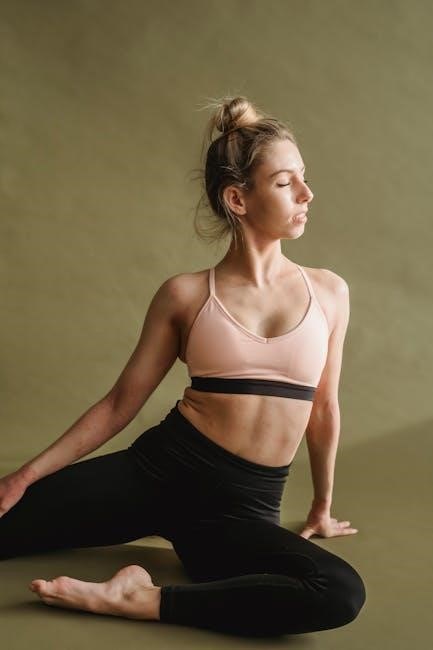
Yoga Nidra is a powerful deep relaxation practice that guides participants into a state of conscious sleep, fostering profound rest and renewal. This technique combines deep breathing, visualization, and awareness to quiet the mind and rejuvenate the body. Unlike traditional meditation, Yoga Nidra allows for a state of deep relaxation while maintaining partial consciousness, making it accessible to everyone. It is particularly beneficial for reducing stress, improving sleep quality, and enhancing emotional well-being. In a gentle yoga sequence, Yoga Nidra is often practiced in a lying-down or seated position, using props for comfort. The practice is led by a guide who directs the focus inward, promoting a sense of calm and inner peace. Regular practice of Yoga Nidra can lead to long-term benefits, including increased resilience to stress and a deeper connection to one’s inner self.
The gentle yoga sequence PDF offers a structured path to relaxation and mindfulness, perfect for all levels. It guides a rejuvenating practice, fostering calm and overall well-being.
Final Thoughts on Gentle Yoga Practice
Gentle yoga is a transformative practice that nurtures both body and mind, offering relaxation, flexibility, and stress relief. Its slow, deliberate movements and deep breathing create a calming experience, making it accessible to all levels. Regular practice fosters a deeper mind-body connection, improving overall well-being and emotional balance. The structured 60-minute sequence ensures a holistic practice, from warm-up to relaxation, promoting physical and mental rejuvenation. Whether you’re a beginner or an experienced practitioner, gentle yoga provides a soothing escape from daily stress, encouraging self-care and mindfulness. Embrace this practice to cultivate inner peace and enhance your quality of life. The printable PDF guide serves as a valuable resource, helping you maintain consistency and deepen your yoga journey.
Encouragement to Start Your Gentle Yoga Journey
Embarking on a gentle yoga journey is a beautiful step toward self-care and wellness. This practice, designed for all levels, offers a nurturing environment to explore your body’s potential while fostering relaxation and mindfulness. With a printable gentle yoga sequence PDF, you can easily follow a structured 60-minute practice, guiding you through warm-ups, seated postures, standing poses, and relaxation techniques. Each movement is slow and intentional, allowing you to honor your body’s needs and capabilities. Whether you seek stress relief, improved flexibility, or a deeper mind-body connection, gentle yoga provides a compassionate space to grow. Don’t hesitate to begin—your journey toward calm, strength, and inner peace starts here. Download your guide today and take the first step into a more balanced, serene you.
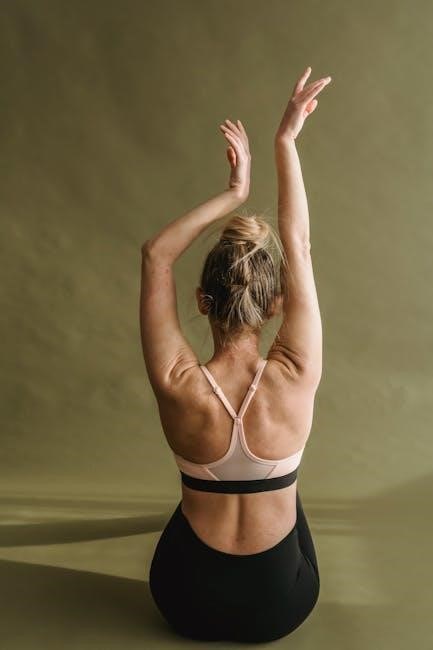
How to Download and Use the Gentle Yoga Sequence PDF
Downloading and using the gentle yoga sequence PDF is simple and convenient. Visit the provided link and instantly access the downloadable file, which includes a 60-minute structured practice. Print the PDF or use it digitally to follow the sequence at your own pace. The guide features detailed instructions, pose descriptions, and breathing techniques to ensure a smooth and safe practice. Begin by creating a peaceful environment, then follow the flow of warm-ups, seated postures, standing poses, and relaxation exercises. Modify poses as needed using props like blocks or straps for comfort. Take your time with each movement, focusing on deep breaths and mindfulness. This guide is perfect for both beginners and experienced practitioners, offering a holistic approach to gentle yoga. Start your journey today and enjoy the calming benefits of this thoughtful sequence.